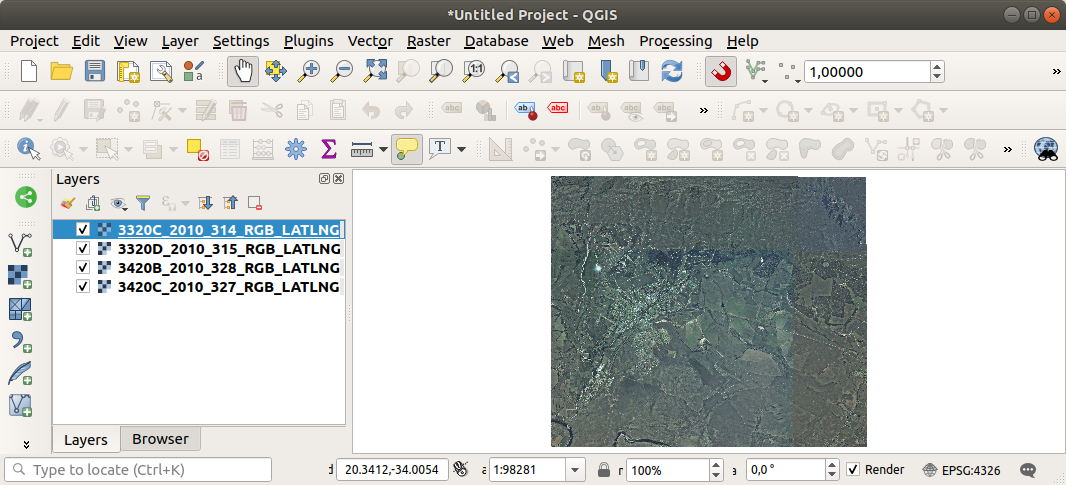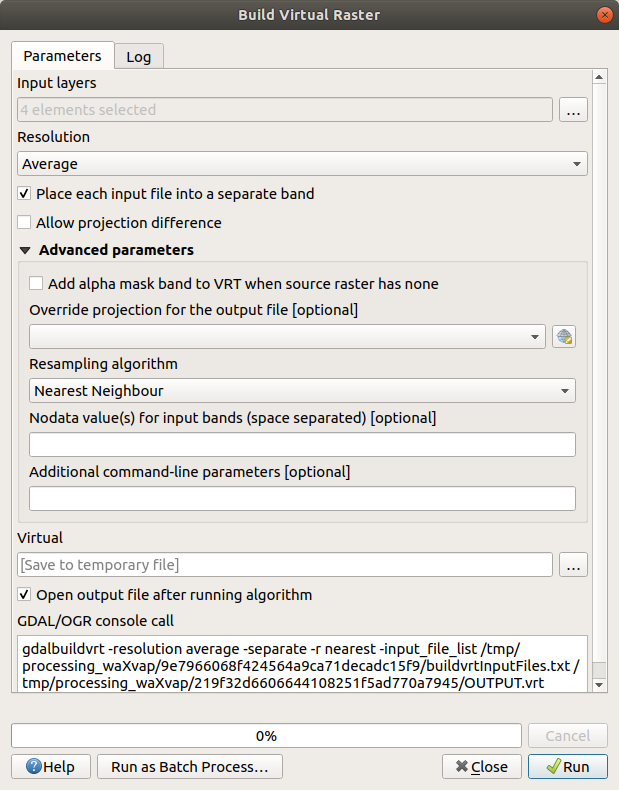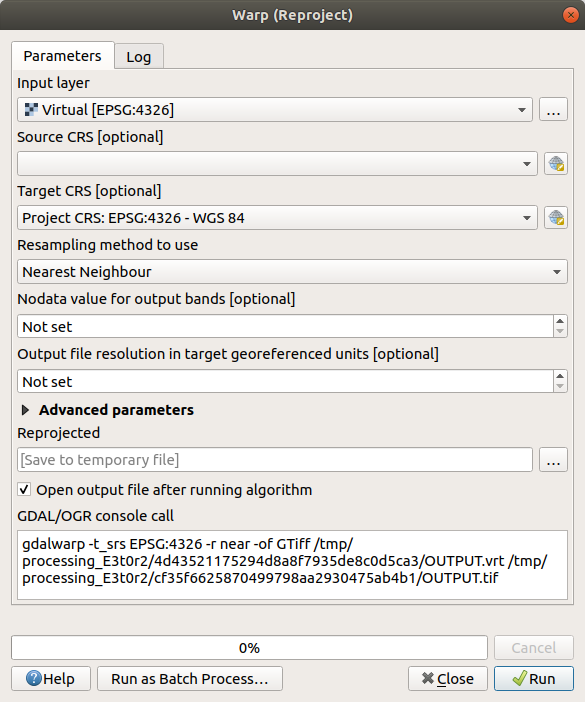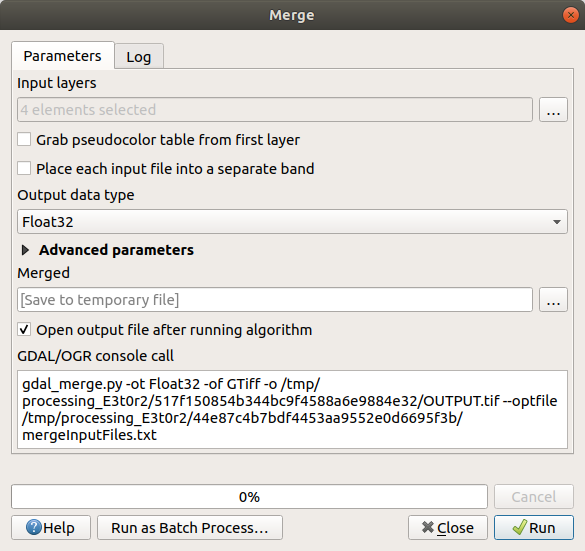7.1. Lesson: 래스터 데이터 작업
Raster data is quite different from vector data. Vector data has discrete features with geometries constructed out of vertices, and perhaps connected with lines and/or areas. Raster data, however, is like any image. Although it may portray various properties of objects in the real world, these objects don’t exist as separate objects. Rather, they are represented using pixels with different values.
During this module you are going to use raster data to supplement your existing GIS analysis.
The goal for this lesson: To learn how to work with raster data in QGIS.
7.1.1.  Follow Along: 래스터 데이터 불러오기
Follow Along: 래스터 데이터 불러오기
Raster data can be loaded with the same methods we used for vector data. However we suggest to use the Browser Panel.
Open the Browser Panel and expand the
exercise_data/rasterfolder.Load all the data in this folder:
3320C_2010_314_RGB_LATLNG.tif3320D_2010_315_RGB_LATLNG.tif3420B_2010_328_RGB_LATLNG.tif3420C_2010_327_RGB_LATLNG.tif
You should see the following map:

There we have it - four aerial images covering our study area.
7.1.2.  Follow Along: 가상 래스터 생성
Follow Along: 가상 래스터 생성
Now as you can see from this, your solution layer lies across all four images. What this means is that you are going to have to work with four rasters all the time. That’s not ideal. It would be better to have one file to work with.
Luckily, QGIS allows you to do exactly this, and without needing to actually create a new raster file. You can create a Virtual Raster. This is also often called a Catalog, which explains its function. It’s not really a new raster. Rather, it is a way to organize your existing rasters into one catalog: one file for easy access.
To make a catalog we will use the .
Open the Build virtual raster algorithm from the ;
In the dialog that appears, click on the … button next to the Input layers parameter and check all the layers or use the Select All button;
Uncheck Place each input file into a separate band. Notice the text field below. What this dialog is actually doing is that it is writing that text for you. It is a long command that QGIS is going to run.
참고
Keep in mind that you can copy and paste the text in the
OSGeo Shell(Windows user) orTerminal(Linux and OSX users) to run the command. You can also create a script for each GDAL command. This is very handy when the procedure is taking a long time or when you want to schedule specific tasks. Use the Help button to get more help on the syntax of the command.Finally click on Run.
참고
As you know from the previous modules, Processing creates temporary layers by default. To save the file click on the … button.

You can now remove the original four rasters from the Layers Panel and leave only the output virtual catalog raster.
7.1.3.  래스터 데이터 변환
래스터 데이터 변환
앞에서 설명한 방법으로 카탈로그를 이용해서 데이터셋을 가상으로 합치고 “실시간”으로 재투영할 수 있습니다. 그러나 비교적 긴 시간 동안 사용할 데이터를 준비하는 경우, 이미 합쳐지고 재투영된 새 래스터를 생성하는 편이 더 효율적일 수도 있습니다. 초기 준비 과정에 시간이 걸릴 수도 있지만, 맵 상에서 래스터를 사용할 때 속도를 향상시킬 수 있습니다.
래스터 재투영
Open Warp (reproject) from .
You can also reproject virtual rasters (catalogs), enable multithreaded processing, and more.

래스터 합치기
If you need to create a new raster layer and save it to disk you can use the merge algorithm.
참고
Depending on how many raster files you are merging and their resolution, the new raster file created can be really big. Consider instead to create a raster catalog as described in the Create a Virtual Raster section.
Click on the Merge algorithm from the menu.
As we did for the Create a Virtual raster, use the … button to choose which layers you want to merge.
You can also specify a Virtual raster as input, and then all of the rasters that it consists of will be processed.
If you know the GDAL library, you can also add your own options by opening the Advanced parameters menu.

7.1.4. In Conclusion
QGIS를 통해 사용자의 기존 프로젝트에 래스터 데이터를 손쉽게 포함시킬 수 있습니다.
7.1.5. What’s Next?
다음 강의에서 항공사진이 아닌 래스터 데이터를 사용해서 래스터를 어떻게 심볼로도 활용할 수 있는지 배워보겠습니다.